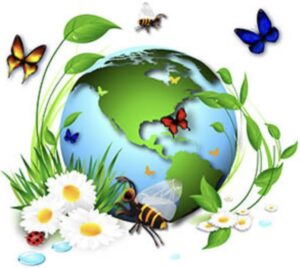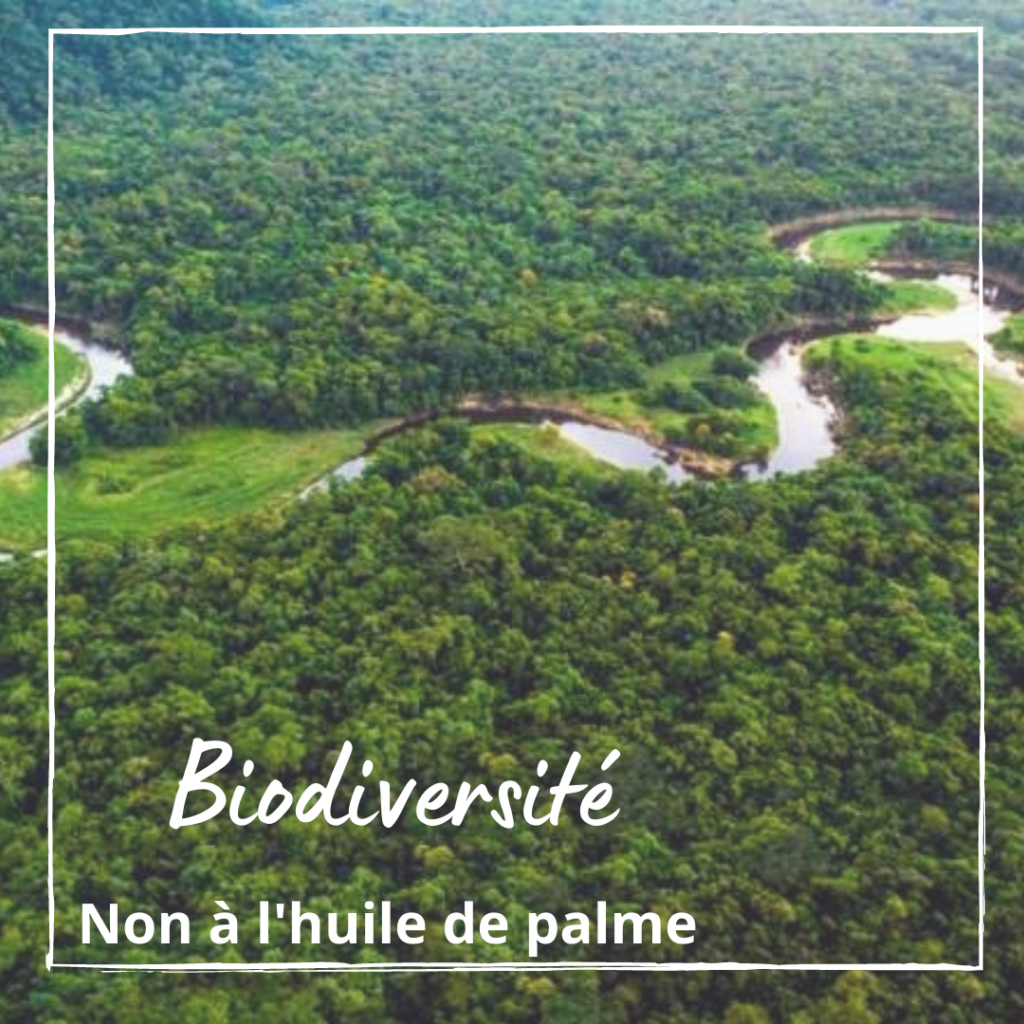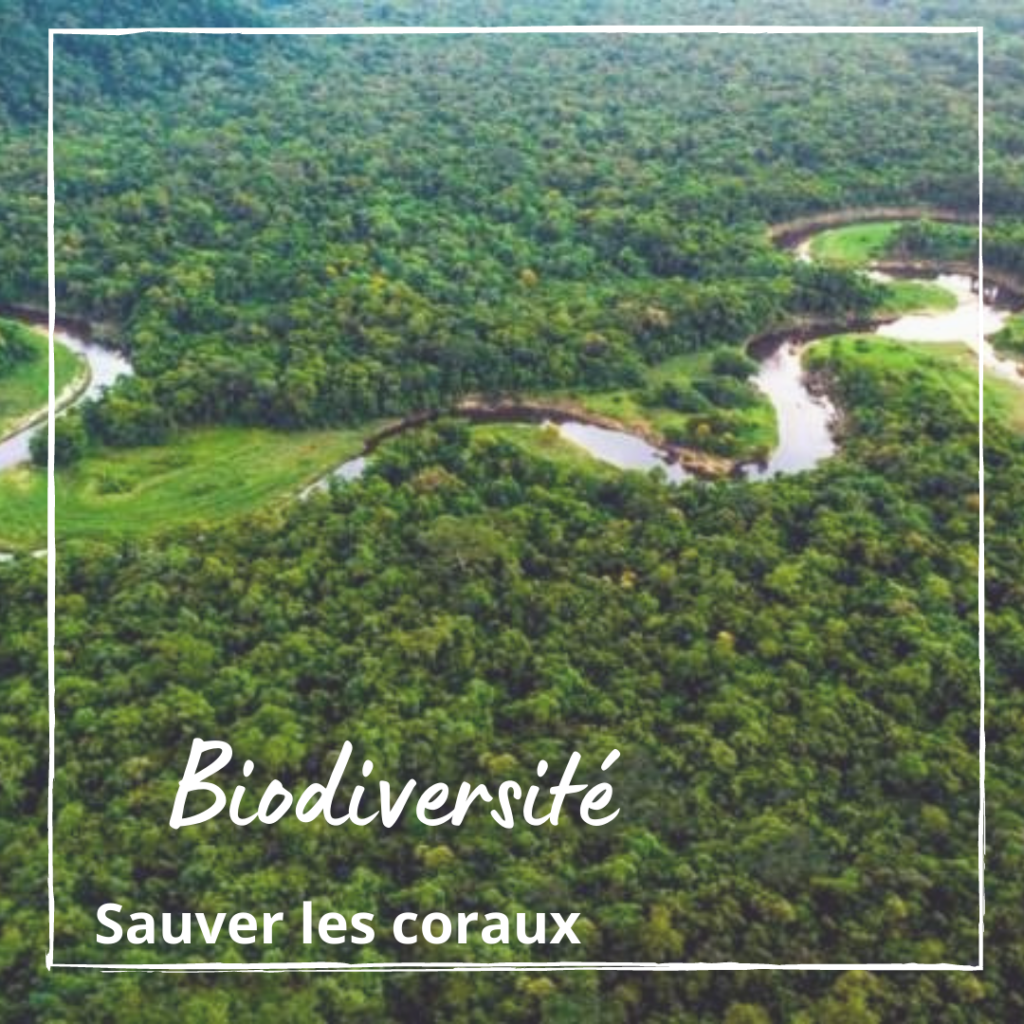
biodiversity
Biodiversity is directly threatened by climate change. In many parts of the world, species composition has changed and species have disappeared at a rate of 100 to 1000 times faster than normal.
And conversely, the disappearance of animal and plant species threatens the fight against climate change.
Indeed; biodiversity provides essential goods and services both for adapting to the effects of climate change (wetlands provide natural protection against flooding, vegetation provides 'locally improve the quantity and quality of water, green spaces improve the microclimate and air quality in cities, …) and to mitigate climate change, thanks in particular to the absorption of CO2 by marine and terrestrial ecosystems.

No to palm oil
Do not buy any product that contains palm oil. Of course we obviously think of the famous spread and we forget the soaps.
Tips: Pay attention to labels when shopping, take the time to read them. And for food; the best thing is to reduce your consumption of processed products and snacks that contain them. Finally, we can never say it enough; start making your own snacks.
Widely used by the food industry in processed products, palm oil is singled out for its negative environmental impact (deforestation and species extinction) and also on health in general. (source)
The oil palm only grows in the equatorial zone. These areas are also that of large basins of dense forests. Problem, demand is exploding: over the past ten years, palm oil production has jumped by nearly 83%. Every day, thousands of hectares are therefore burned to grow these famous palm trees, making this crop one of the main causes of deforestation in Southeast Asia, but also, more recently, in Africa. (source)
What about certification RSPO ? A form of Greenwashing to allow the use of palm oil in consumer products.
Carbon Footprint
5.59 kgCO2e/kg net weight

All natural
Buy mostly organic fruits and vegetables.
Tip : The cost of organic certification hinders some farmers from declaring themselves when they are committed to a respectful approach. So take the time to inquire.
In 2020, sales in France of plant protection products amounted to 44,036 tonnes. (Source: Ministry of Agriculture and Food) The dangers of pesticides on the environment are numerous. In addition to killing the target species, they can also contaminate and kill other actors in the food chain. Birds, for example, are very often affected by pesticides by eating contaminated insects. (source)
It is better to buy preferably organic to protect biodiversity and our soils from pesticides.
Carbon Footprint
Organic carrot = 0.0612 kgCO2e/kg
Carrot = 0.0706 kgCO2e/kg

Protect my skin and the corals
Buy an "ocean-friendly" sunscreen that protects both your skin from the sun and marine biodiversity.
Tip : A sunscreen is less harmful to the environment if it contains mineral UV filters such as titanium dioxide and zinc dioxide … non-toxic, neither for humans nor for nature.
Every year, 25,000 tons of chemical active ingredients from sunscreens are dumped into the oceans, including 4,000 to 6,000 tons on coral reefs. (source : National Géographic)
To limit the degradation of these marine ecosystems, countries around the world (Mexico, Australia, Caribbean, Galapagos Islands, Costa Rica, etc.) prohibit the sale of sunscreens that are toxic to corals. Aware of their impact, more and more cosmetic brands are innovating by creating anti-UV formulas with minimum impact on the environment, based on mineral filters, infused with vegetable and biodegradable oils. A list to help you see more clearly: Marie Claire

Protect my pollinator friends
Plant perennial, native plants rich in nectar, create an insect hotel, leave a saucer of water in the summer or give seeds for the winter… In short, all actions in favor of our friends insects and birds.
Tip : The list of attractive plants for bees: Ministère de l’Agriculture
Bees and other pollinating insects are essential for three quarters of the world's agriculture and therefore play an essential ecological role.
Unfortunately in the world, we see the decline of 50% of these insect populations. A recent European report mentions a danger of extinction for one in ten species (bees and butterflies). Although many factors were responsible for this phenomenon, none of them has been recognized as the cause. (source : Futura Sciences)
Source : ADEME, Agence de la Transition écologique
